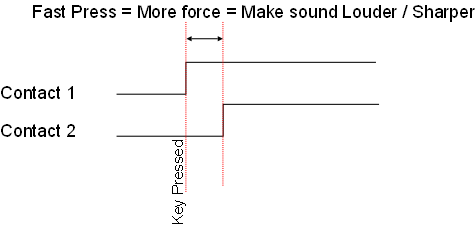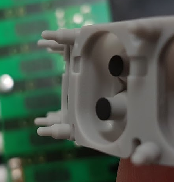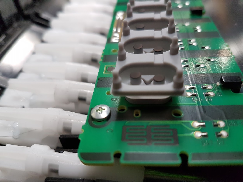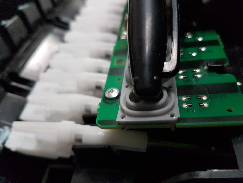Do you have one key on your piano that plays at full volume, when all the rest are quieter?
How Does Velocity Sensitivity volume work?



Examples of what the rubber contacts look like:



How can you fix loud velocity keys?
The switches are made up of strips of different key numbers depending on manufacturer, typically they’re in octave splits, or upper and lower sets and vary between 8,11,12 keys per strip. They’re simply 2 little pieces of rubber carbon mounted within a very fine membrane frame, over time the membranes lose their shape or elasticity and cause breakdowns on the number of switches working.
We recommend that if a few keys have gone, there is a good chance that the rest of the switches have had the same amount of wear and advise that we replace the entire keybed worth of membrane. The cost for parts is minimal typically being no more than £6-10 per octave, the time and cost comes with stripping down the piano to the keybed and often involves removal of between 20 and 60 screws of different sizes!
It is something we often carry out to pianos and it gives them a new lease of life. We are a Yamaha approved service centre and recognised by Korg and Roland and are able to get spare parts. Most manufacturers support spares for 10 year. If your piano is nearing that age please enquire with your model number and we can investigate spares for you.
Is this a DIY job?
We would honestly recommend against doing it yourself. More damage can occur as a result of incorrect disassembly/ assembly. We have at least a dozen cases every year of a bad DIY attempt which has resulted in worse performance than before. Added the frustration that you don’t really know if it’s been successful or not until you’ve practically reassembled the piano again!
Reasons to take our word it’s not for DIY!
-Parts can be easily damaged during disassembly / assembly.
-Online tutorials can often leave out potentially important information, making the assumption you already know. i.e. how to unclip a surface mount ribbon edge connector.
-You only really find out if it’s worked after reassembling, potentially wasting lots of time.
-Part numbers routinely change and you could order wrong parts
-A disassembled piano takes up lots of space!
